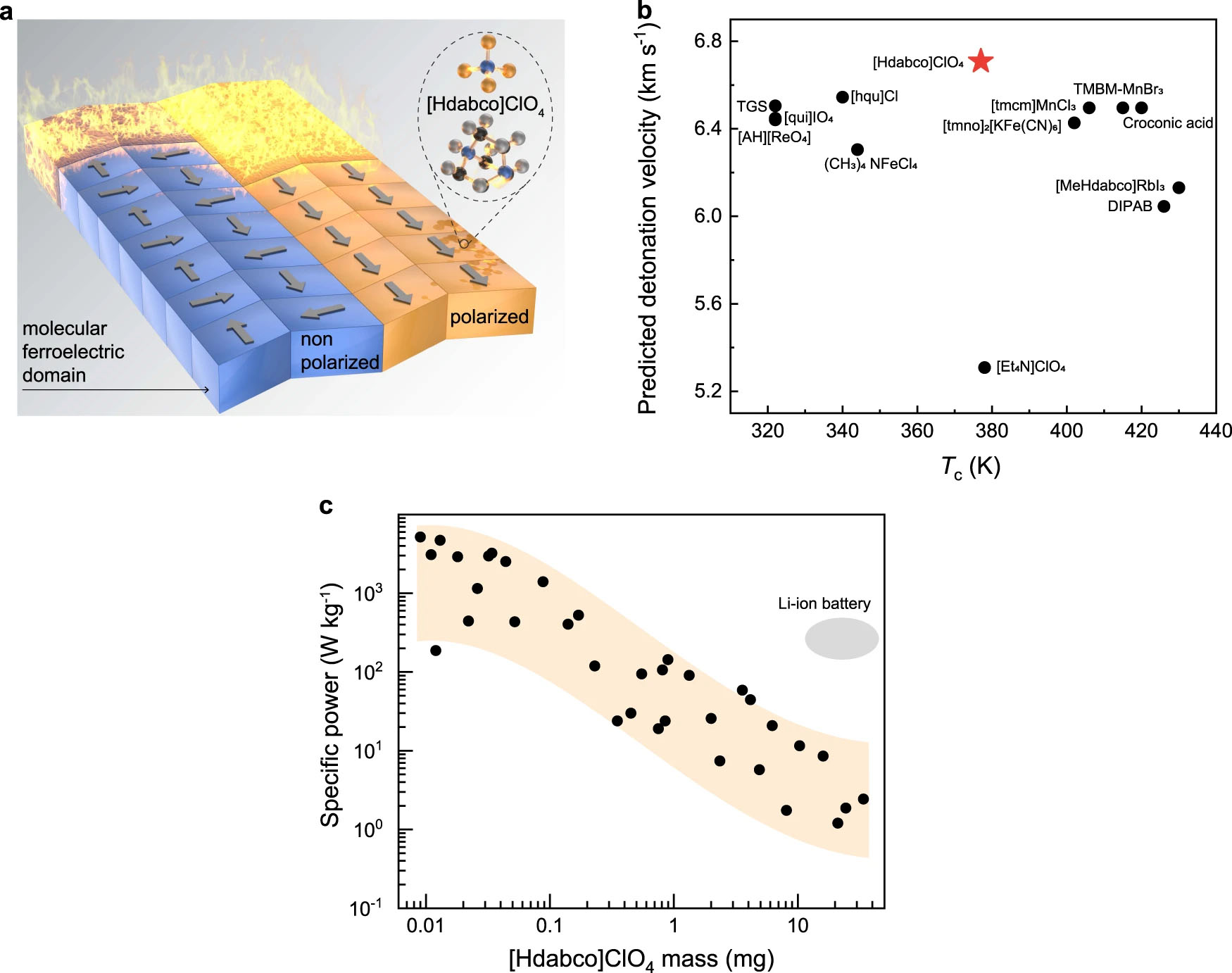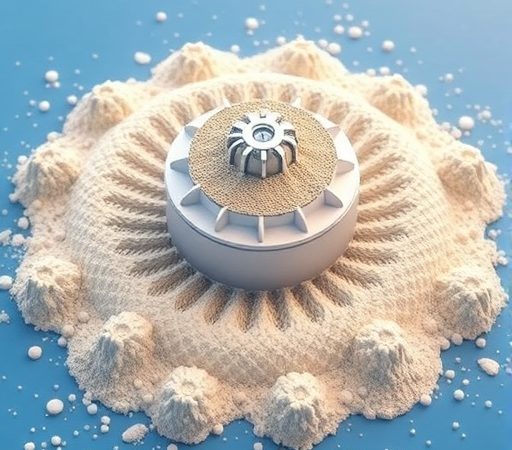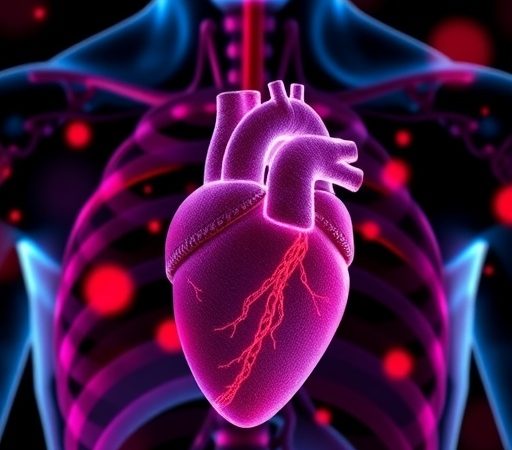| Nov 21, 2022 |
|
|
|
(Nanowerk Spotlight) ‘Chemical energy’ is a term for the energy stored in the covalent bonds that are holding atoms together in the form of molecules. So-called ‘energetic materials’ store a large amount of this chemical energy that, when released, can be converted into electric, thermal, or mechanical energy.
|
|
Molecular energetic ferroelectric crystals are a subset of chemical energy materials, with external stimuli-dependent energy release. Ferroelectric materials possess spontaneous polarizations that originate from the displacement of ions in the crystals. By applying an electric field, the polarization can be reversed, leading to a strain response that is known as the piezoelectric effect.
|
|
Two major challenges in energetic materials research are the ability to control the energy release and the control and tuning of the thermal conductivity.
|
|
In a new study (Nature Communications, “Releasing chemical energy in spatially programmed ferroelectrics”) resulting from a collaboration between the University at Buffalo, the DEVCOM Army Research Laboratory, and the University of Maryland at College Park, the multidisciplinary research team reports the controlled chemical energy release from spatially programmed molecular energetic ferroelectric crystals.
|
|
“By using self-assembly directed additive manufacturing, we are able to control the mesoscale structure of a molecular energetic compound, together with the polarization-controlled heat transfer due to its ferroelectric nature, leading to the control of chemical energy release during the bond breaking,” Shenqiang Ren, a Professor in the Department of Mechanical and Aerospace Engineering, and Department of Chemistry, at the University at Buffalo, tells Nanowerk. “This stimuli-controlled energetic metamaterial, coupled with ferroelectrics into one material platform, provides the pathway towards controlled energy release, which we believe is an exciting result reported in our study.”
|
|
Such stimuli-controlled metamaterials (in this case, energetic ferroelectrics), could potentially provide a pathway towards the controlled release of chemical energy and its conversion to electric energy or thermal energy for use, for instance, in energy conversion systems, energetic materials, and thermal conductors.
|
 |
| a Schematic figure for the polarization control of decomposition for molecular ferroelectrics. The polarization induced ferroelectric domain structure change can cause the change in thermal conductivity, which further influence the detonation velocity. b Data-driven computational materials design. Results of Tc versus the predicted detonation for molecular ferroelectrics from machine learning models. c The mass dependent specific peak power for energetic [Hdabco]ClO4. The specific power is enhanced at the low-mass devices due to the larger surface area. (Reprinted from Nature Communications under a Creative Commons Attribution 4.0 International License) (click on image to enlarge)
|
|
As a showcase molecular energetic ferroelectric material for their study, the researchers chose a biaxial molecular ferroelectric thin film of [Hdabco]ClO4.
|
|
“We identified this material by applying a two-step machine learning technique for high-throughput screening of integrated molecular energetic ferroelectrics,” Ren explains the team’s approach. “The first step is focused on predicting molecular ferroelectric candidates that can fulfill the required design parameters: water-soluble characteristics for ice-templating assembly, high polarization, and Curie temperature. The second step predicts the detonation velocity for further down-selecting candidates with high chemical-energy density and high energy release rate.”
|
|
By combining ice-templating assembly and additive manufacturing, the team was able to bridge multiple length scales and create three-dimensional aligned porous molecular energetic ferroelectrics with complex geometries, large surface area, and low density of 0.35 g cm−3.
|
![Structure design of energetic [Hdabco]ClO4 by additive manufacturing coupled with ice-templating](https://peymantaeidi.net/stem-cell/wp-content/uploads/2022/11/id61878_2.jpg) |
| Structure design of energetic [Hdabco]ClO4 by additive manufacturing coupled with ice-templating. a The schematic diagram of an extrusion-based 3D printing. b Optical image for the 3D printed [Hdabco]ClO4. Fluorescent colorants are added for imaging. c Shear-thinning behavior of precursor with different weight ratio (cellulose/[Hdabco]ClO4). d Schematics of freeze-drying process. (Inset) SEM image for the ice-templated [Hdabco]ClO4 (Reprinted from Nature Communications under a Creative Commons Attribution 4.0 International License) (click on image to enlarge)
|
|
This architecture allows polarization-controlled energy release and features an anisotropic thermal conductivity ratio of 15. In addition, the estimated detonation velocity of molecular ferroelectrics can be tuned from 6.69 ± 0.21 to 7.79 ± 0.25 kms−1 by switching the polarization state.
|
|
Going forward, the team plans to extend the principles gained from this study to a broad and new material family.
|
By
Michael
Berger
–
Michael is author of three books by the Royal Society of Chemistry:
Nano-Society: Pushing the Boundaries of Technology,
Nanotechnology: The Future is Tiny, and
Nanoengineering: The Skills and Tools Making Technology Invisible
Copyright ©
Nanowerk
|
|
|


![Structure design of energetic [Hdabco]ClO4 by additive manufacturing coupled with ice-templating](https://peymantaeidi.net/stem-cell/wp-content/uploads/2022/11/id61878_2.jpg)


